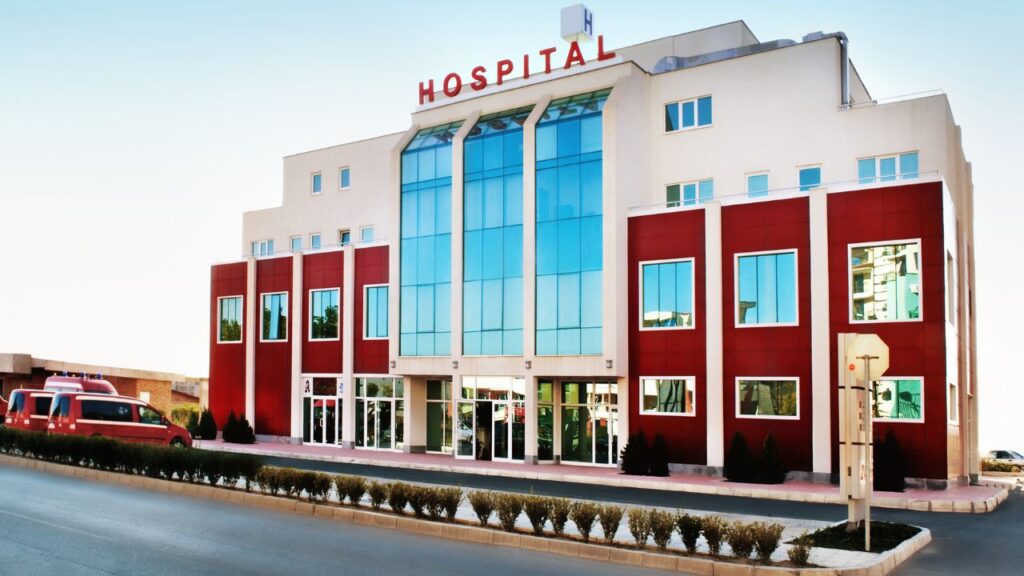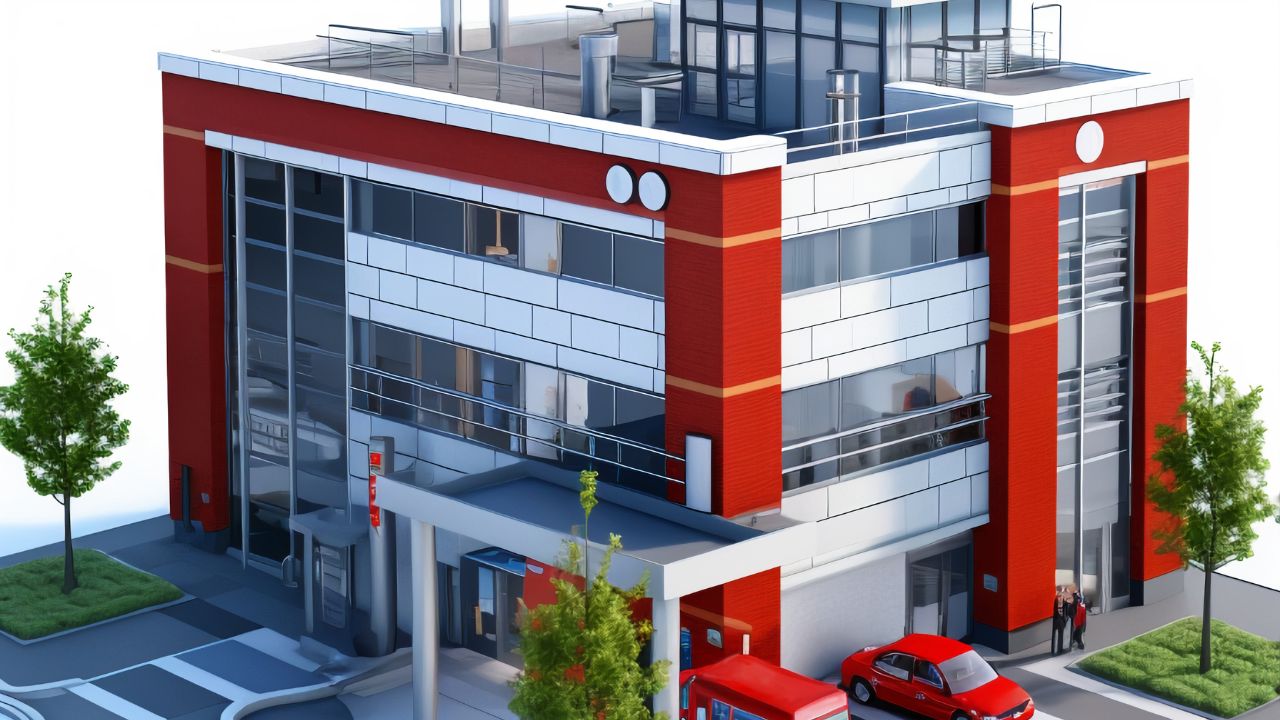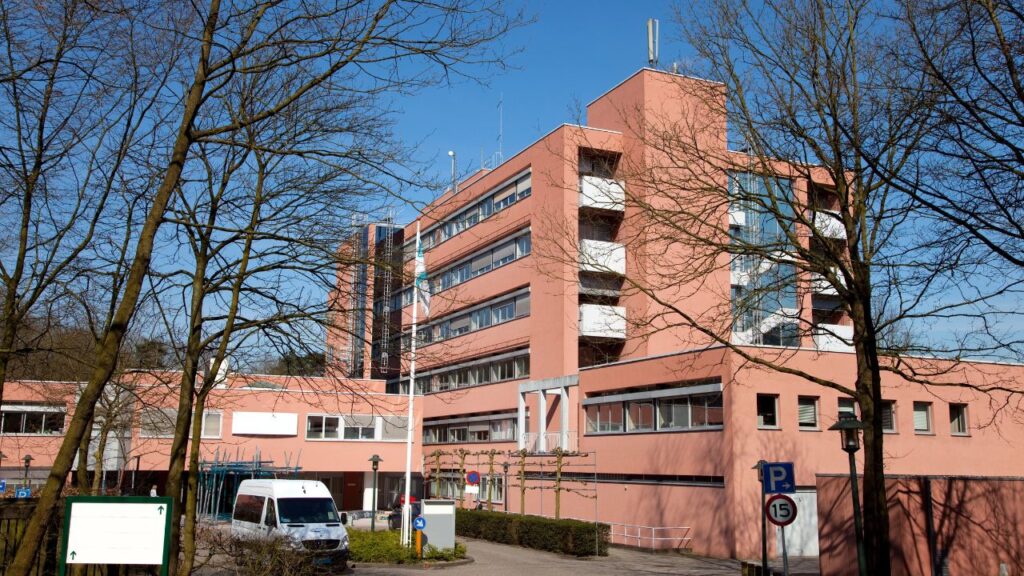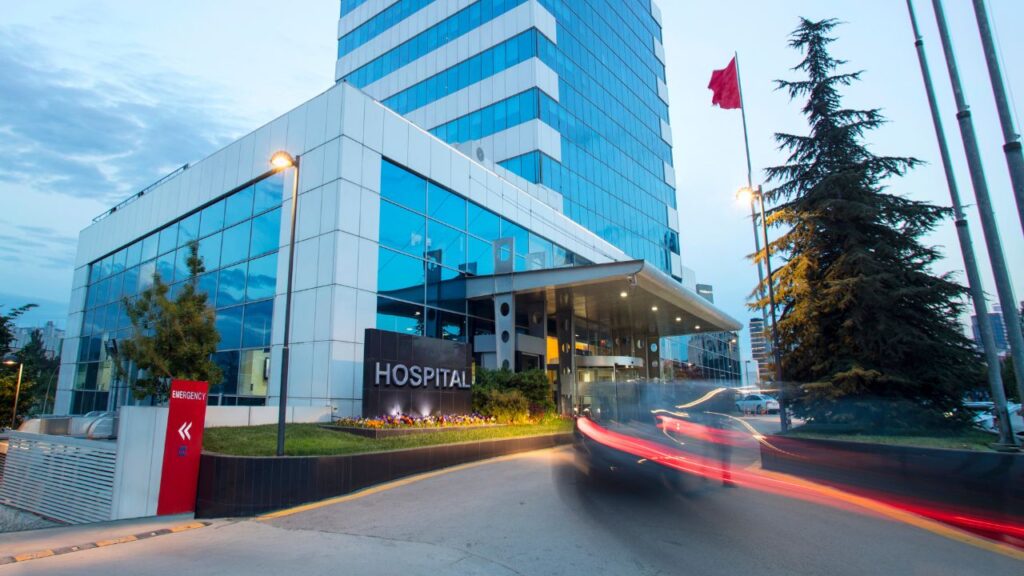Bid Strong, Bid Smart – Try Our Hospital Construction Cost Estimating Service!
- Accurancy
- Efficiency
- Transparency
- Customization
- Time Saving
- Professionalism
- Cost Control

Constructing a hospital is a multifaceted endeavor that involves meticulous planning, precise execution, and a thorough understanding of various cost components. Among these, the structural concrete cost plays a pivotal role in determining the overall financial investment required for developing a robust and durable healthcare facility. In this article, we will delve into the factors and considerations influencing the structural concrete costs in hospital construction and provide estimations to guide project stakeholders.

The structural integrity of a hospital is paramount, considering the building’s role in providing critical healthcare services. Structural concrete, known for its strength, durability, and ability to withstand various stresses, forms the backbone of hospital buildings. It supports the entire structure, including medical equipment, patient loads, and the complex infrastructure inherent to healthcare facilities. The importance of using high-quality structural concrete cannot be overstated, as it directly impacts the safety, longevity, and functionality of the hospital.

Fully Insured License
Hire Contractor For Hospital Construction

Make Informed Design Decisions Showcase Your Design Ideas
Get RenderingThe intricacy of hospital designs is a critical factor influencing structural concrete costs. Hospitals house specialized spaces like operating rooms, laboratories, and imaging facilities, each demanding unique structural considerations. Complex designs often necessitate additional measures such as enhanced reinforcement, specialized formwork, and the expertise of skilled engineers. The integration of cutting-edge medical technology and the need for precise environmental control further amplify the complexity, underscoring the importance of meticulous planning and execution to meet design specifications.
Given the critical nature of hospitals as essential infrastructure, adherence to stringent seismic standards is paramount. Designing and constructing a healthcare facility to withstand seismic activity is a crucial aspect that directly impacts structural concrete costs. Engineers must implement specific seismic design requirements, including advanced reinforcement techniques and foundation systems capable of withstanding seismic forces. While this investment contributes to the safety and resilience of the hospital, it underscores the importance of factoring seismic considerations into the overall construction budget.
Hospitals, particularly in areas with heavy medical equipment, face unique and substantial load-bearing demands. The type and magnitude of these loads significantly influence structural concrete costs. The concrete mix design, the extent of reinforcement, and overall structural considerations are tailored to meet these specific requirements. As hospitals evolve to accommodate advanced medical technologies, ensuring that the structure can effectively bear the load is pivotal. Striking the right balance between load-bearing capacity and cost efficiency requires a nuanced approach in the planning and execution phases.
The choice of foundation type, whether it be a slab, crawl space, or basement, plays a crucial role in determining structural concrete costs. The complexity of substructures, which provide stability and support to the entire hospital structure, is another contributing factor. Each foundation type has its cost implications, with basements generally incurring higher expenses due to excavation and waterproofing requirements. Additionally, the choice must align with soil conditions and site-specific factors, emphasizing the need for a comprehensive understanding of foundation dynamics to optimize costs.

Opting for high-quality concrete materials is a strategic investment in the durability and longevity of the hospital structure. This includes considerations such as superior cement, aggregates, and additives. While this choice may entail higher initial costs, the long-term benefits in terms of structural integrity and reduced maintenance expenses are significant. High-quality materials not only contribute to the resilience of the hospital but also align with sustainability goals by minimizing the need for future repairs and replacements.
Site-specific conditions, encompassing soil properties and accessibility, exert a substantial influence on construction processes and associated costs. Conducting a thorough site analysis and preparation is imperative for optimizing structural concrete placement. Unforeseen challenges related to soil stability or difficult site access can lead to unexpected expenses. Strategic planning that considers site-specific conditions allows for proactive mitigation of potential issues, contributing to overall cost-efficiency in the construction of hospital structures.

Regulatory compliance is non-negotiable for hospitals, given their role as critical infrastructure. Adherence to building codes, environmental regulations, and safety standards is imperative and may involve additional measures and inspections. This commitment to regulatory compliance is a cornerstone of responsible and ethical construction practices in the healthcare sector. While meeting these standards can contribute to increased structural concrete costs, it is an essential investment in ensuring the safety of occupants, environmental sustainability, and alignment with legal requirements. The incorporation of these measures into the construction plan reflects a commitment to upholding the highest standards in healthcare facility construction.
Implementing a value engineering approach is paramount in ensuring the cost-effectiveness of a hospital building’s structural design and construction. This involves a meticulous examination of every facet of the project, fostering collaboration among architects, engineers, and contractors. By identifying opportunities to streamline material choices, construction techniques, and design elements, stakeholders can achieve maximum efficiency without compromising safety or quality. Value engineering is a dynamic process that requires continuous collaboration and adaptation throughout the project lifecycle, making it an indispensable strategy for achieving optimal cost savings.
The optimization of foundation design is a critical aspect of achieving cost savings in hospital construction. Collaborating closely with structural engineers is essential to create foundations that not only meet the specific requirements of the hospital but also optimize costs. Leveraging advanced modeling and analysis tools enables the creation of precise and efficient designs, taking into account factors such as load-bearing capacities and seismic requirements. Striking the right balance between structural integrity and cost-effectiveness is a nuanced process that necessitates careful consideration of various parameters, making collaboration and expertise crucial in this endeavor.

Sourcing construction materials locally is a strategic initiative with multifaceted benefits. Beyond minimizing transportation costs, it aligns with sustainability goals by reducing the carbon footprint associated with material transportation. Establishing partnerships with nearby suppliers further enhances the feasibility of cost-effective material procurement. This approach not only contributes to economic efficiency but also underscores the importance of environmental responsibility in the construction process, making it a holistic strategy for achieving sustainable cost savings.
Exploring innovative and alternative construction methods is a proactive strategy to achieve substantial cost savings while maintaining structural integrity. Techniques such as precast concrete elements or modular construction present opportunities to streamline the building process, reducing both labor and material costs. This approach requires a forward-thinking mindset and collaborative effort to integrate these methods seamlessly into the project. By embracing innovation, stakeholders can capitalize on efficiencies offered by alternative construction methods, ensuring cost-effectiveness without compromising the quality of the hospital building.
Optimizing labor and equipment usage through the adoption of modern construction practices is fundamental to achieving cost savings in hospital construction. Implementing lean construction principles, efficient project scheduling, and utilizing advanced construction equipment minimize downtime and enhance overall project efficiency. This not only contributes to direct cost reductions but also ensures timely project completion. Efficient construction practices are dynamic and adaptive, requiring ongoing evaluation and adjustment to align with project goals and optimize cost-effectiveness.
Leveraging construction technologies, such as Building Information Modeling (BIM) and construction management software, plays a transformative role in enhancing project efficiency. These tools facilitate improved communication, reduce errors, and enable real-time collaboration among project stakeholders. The seamless flow of information afforded by technology integration allows for agile decision-making, contributing to better overall project management. Embracing technological advancements is integral to achieving long-term cost savings and ensuring the hospital building’s success in a rapidly evolving construction landscape.
Considering the long-term costs associated with the hospital building’s structural elements requires a comprehensive and forward-thinking approach. Conducting a lifecycle cost analysis involves evaluating not only initial construction expenses but also ongoing maintenance and potential modifications. This strategic perspective guides decisions that provide sustained cost savings over the lifespan of the hospital. Emphasizing the importance of investing in a cost-effective and enduring structural foundation, lifecycle cost analysis encourages a holistic view of the project, ensuring that long-term considerations are integrated into the decision-making process.

Estimating precise costs for hospital building structural concrete is challenging due to project-specific variables. However, a generalized estimation can be outlined:
It’s crucial to note that these figures are general estimates, and actual costs can vary based on project-specific dynamics, geographical location, and market conditions.

Fully Insured License
Hire Contractor For Hospital Construction

Make Informed Design Decisions Showcase Your Design Ideas
Get RenderingConstructing a hospital demands meticulous planning, where structural concrete costs play a crucial role. The importance of high-quality concrete in supporting healthcare infrastructure cannot be overstated. Various factors, including design complexity, seismic considerations, load-bearing requirements, foundations, material quality, site conditions, and regulatory compliance, intricately influence costs.
Cost-saving strategies like value engineering, optimized foundation design, local material sourcing, alternative construction methods, efficient practices, technology integration, and lifecycle cost analysis offer avenues for financial optimization. While estimating costs is challenging, a generalized range suggests $100 to $150 per cubic yard, totaling $8 million to $12 million or more for a mid-sized hospital. These figures are approximate, subject to project-specific variables, location, and market conditions.
In navigating the complexities of hospital construction, the commitment to advanced materials, innovative methods, and sustainability ensures both immediate success and long-term resilience.
Structural concrete is fundamental to hospital construction, providing strength and durability to support the entire healthcare facility, including medical equipment, patients, and specialized infrastructure.
Complex hospital designs, featuring specialized spaces like operating rooms and laboratories, often require additional measures such as enhanced reinforcement and specialized formwork, influencing structural concrete costs.
Hospitals, being critical infrastructure, must adhere to stringent seismic standards. Designing to withstand seismic activity involves specific engineering requirements, contributing to increased structural concrete costs.
Hospitals, especially those with heavy medical equipment, face unique load-bearing demands. The type and magnitude of these loads influence concrete mix design, reinforcement, and overall structural considerations, impacting costs.
The choice of foundation type, whether slab, crawl space, or basement, plays a crucial role in determining costs. Factors like complexity and soil conditions contribute to variations in structural concrete expenses.
Regulatory compliance is essential for hospitals to meet building codes, environmental regulations, and safety standards. Adherence to these standards may involve additional measures and inspections, impacting structural concrete costs.
Cost-saving strategies include value engineering, optimized foundation design, local material sourcing, alternative construction methods, efficient practices, technology integration, and lifecycle cost analysis. These approaches aim to balance cost-effectiveness with quality and sustainability.
Here I am going to share some steps to get your Hospital Building Structural Concrete Cost estimate report.
You can send us your plan on info@estimatorflorida.com
Before starting your project, we send you a quote for your service. That quote will have detailed information about your project. Here you will get information about the size, difficulty, complexity and bid date when determining pricing.
Our team will takeoff and estimate your project. When we deliver you’ll receive a PDF and an Excel file of your estimate. We can also offer construction lead generation services for the jobs you’d like to pursue further.



561-530-2845
info@estimatorflorida.com
Address
5245 Wiles Rd Apt 3-102 St. Pete Beach, FL 33073 United States
561-530-2845
info@estimatorflorida.com
Address
5245 Wiles Rd Apt 3-102 St. Pete Beach, FL 33073 United States
All copyright © Reserved | Designed By V Marketing Media | Disclaimer